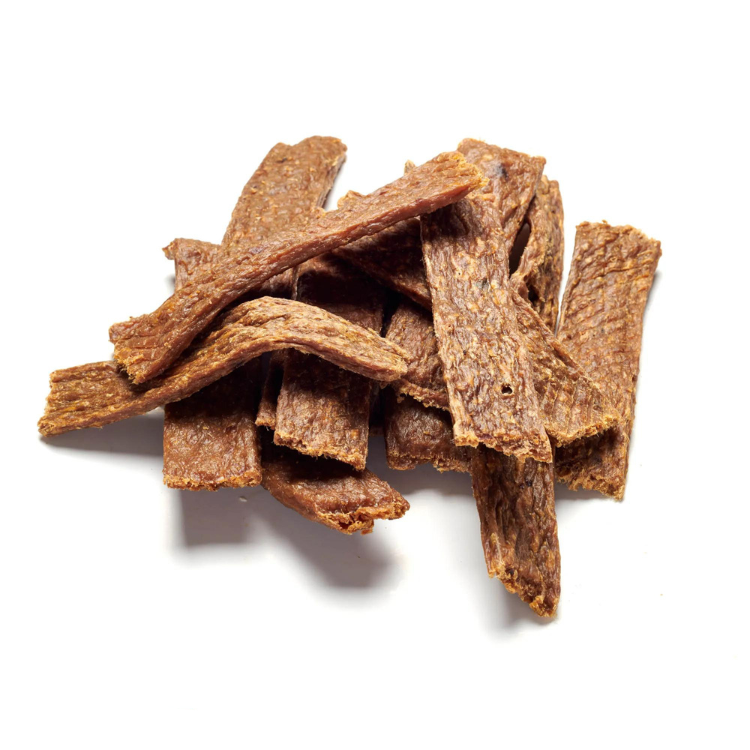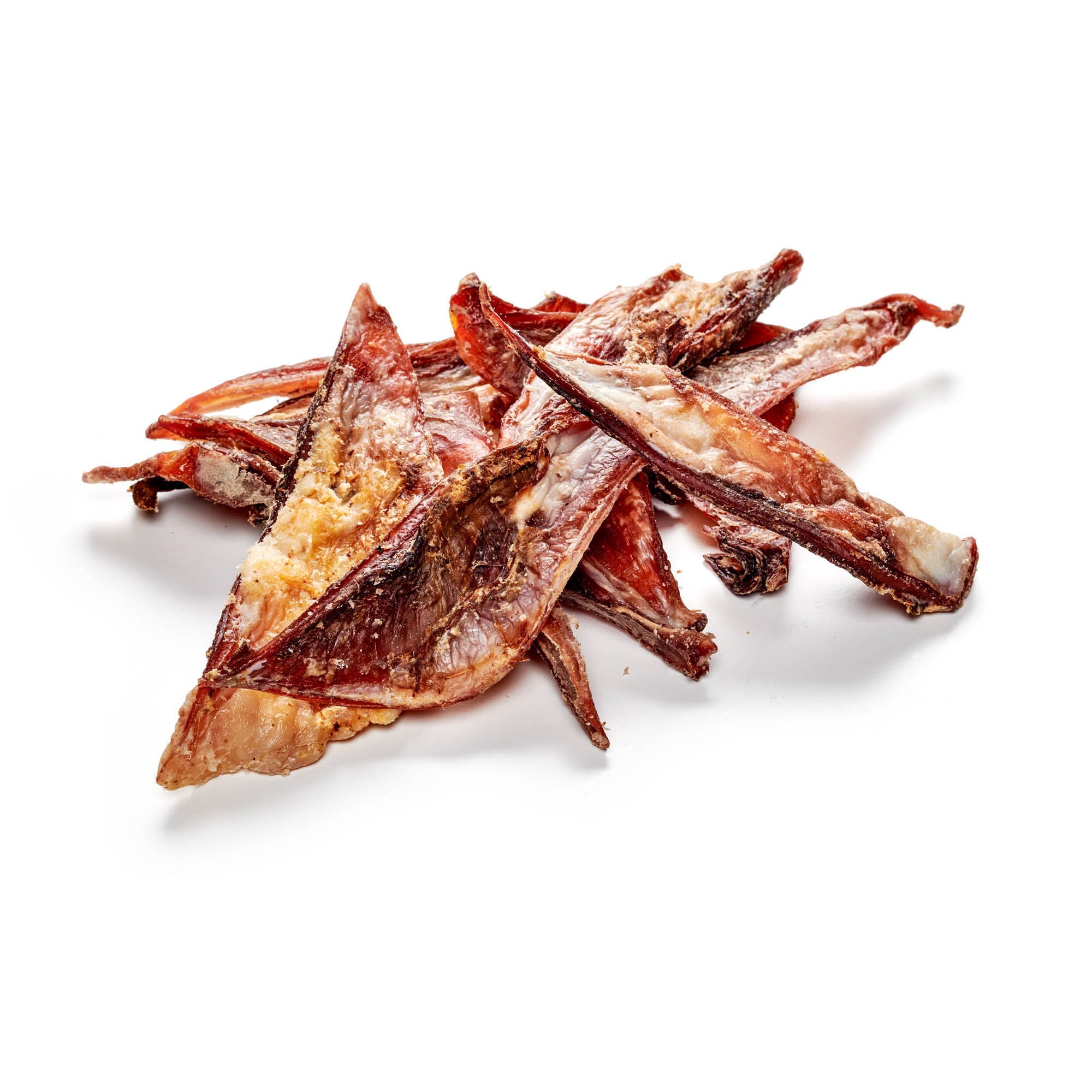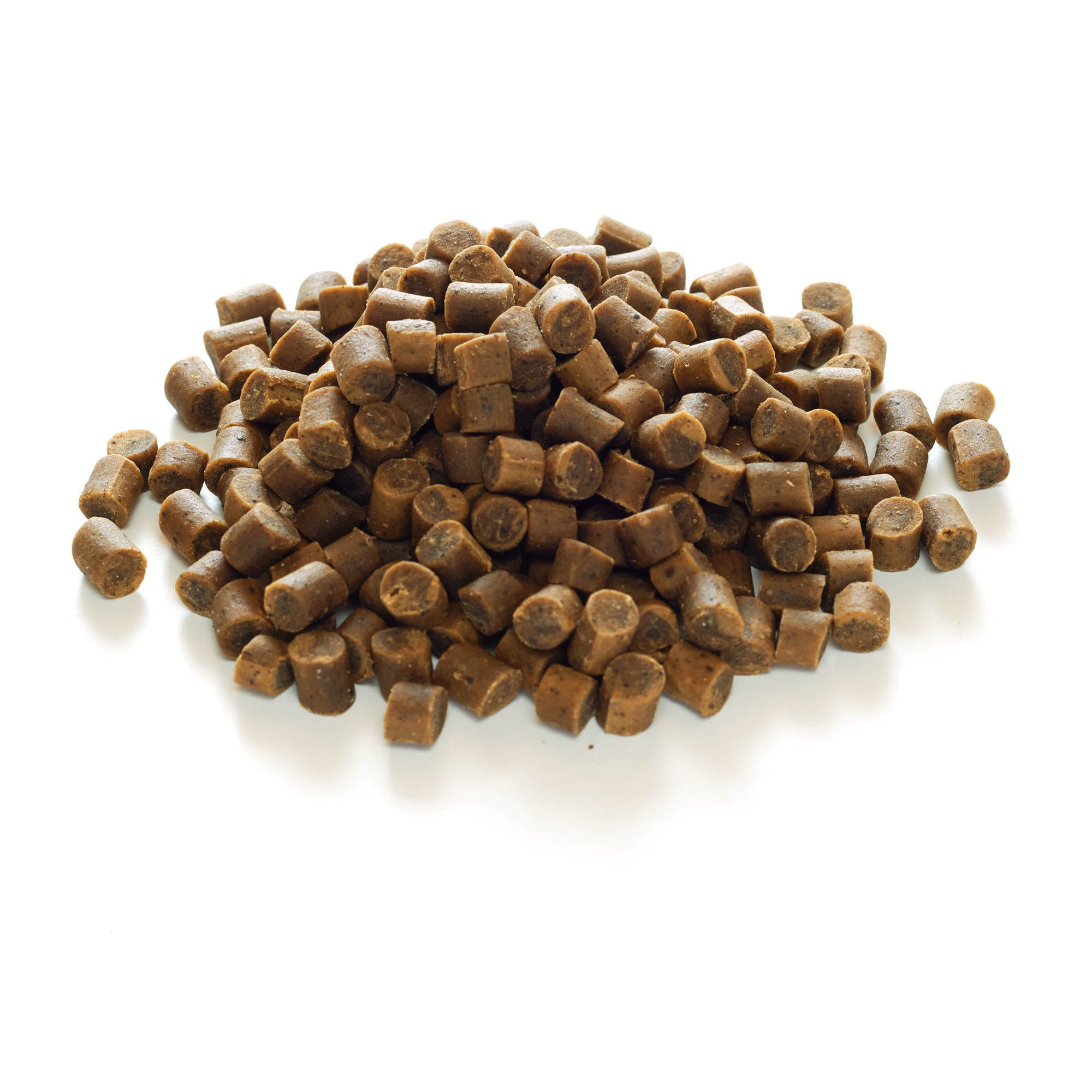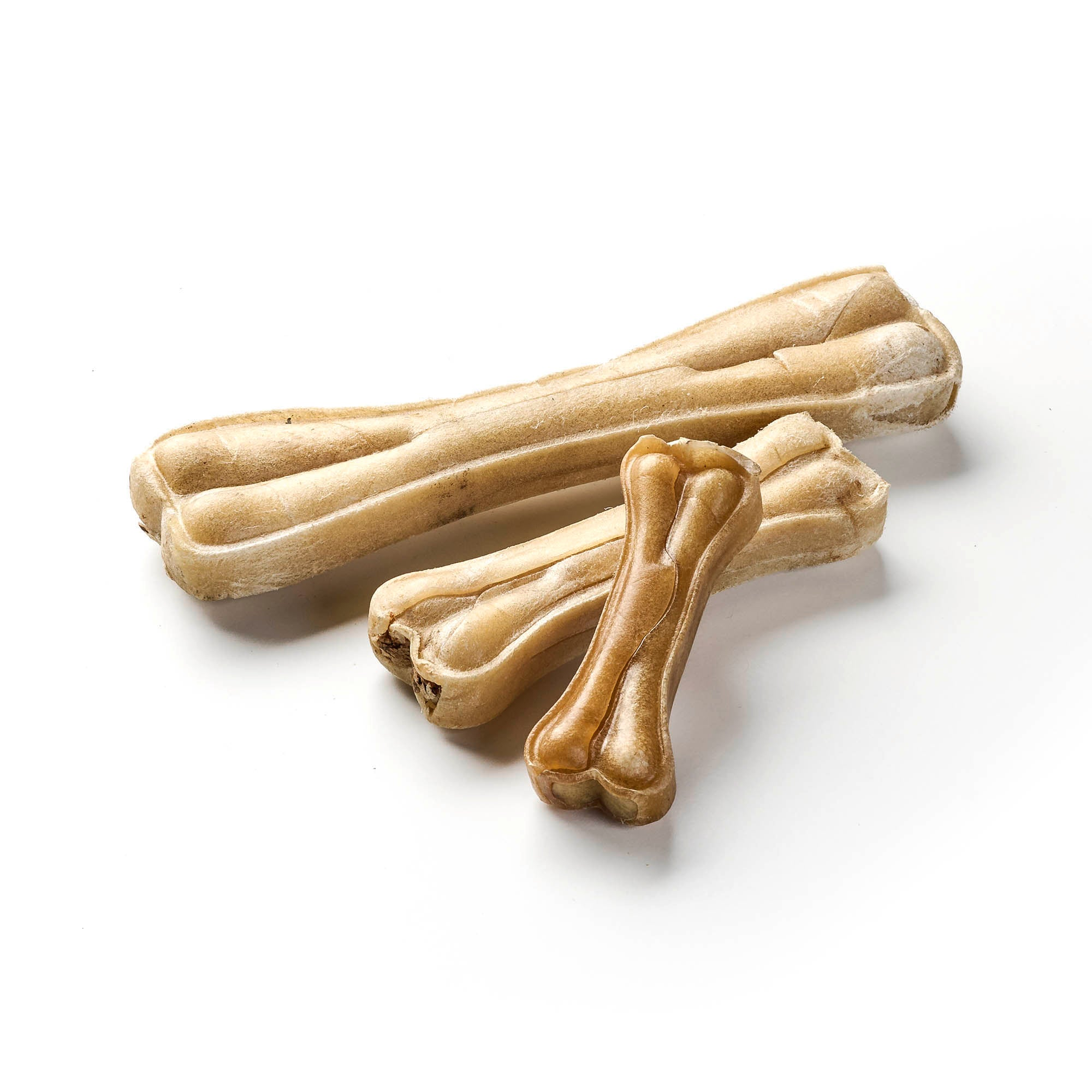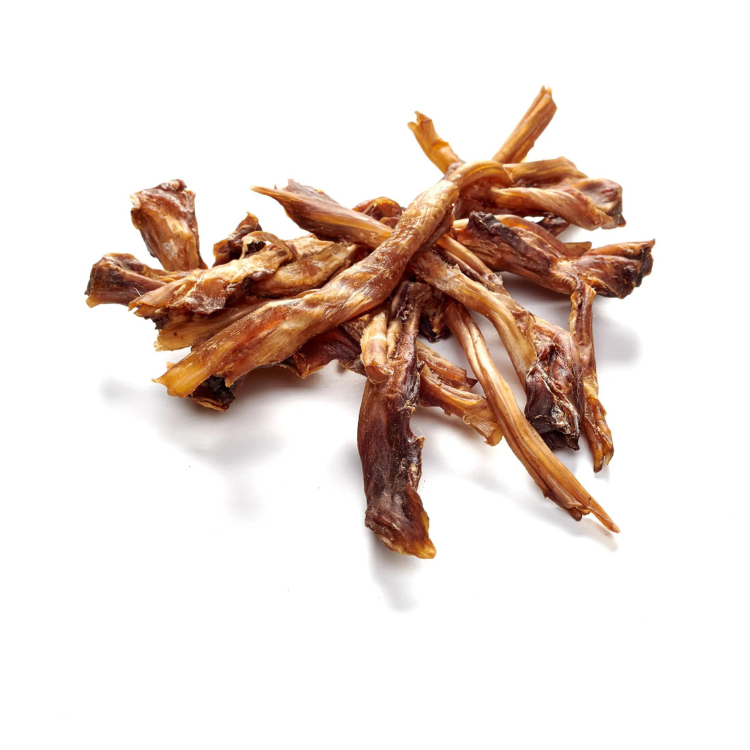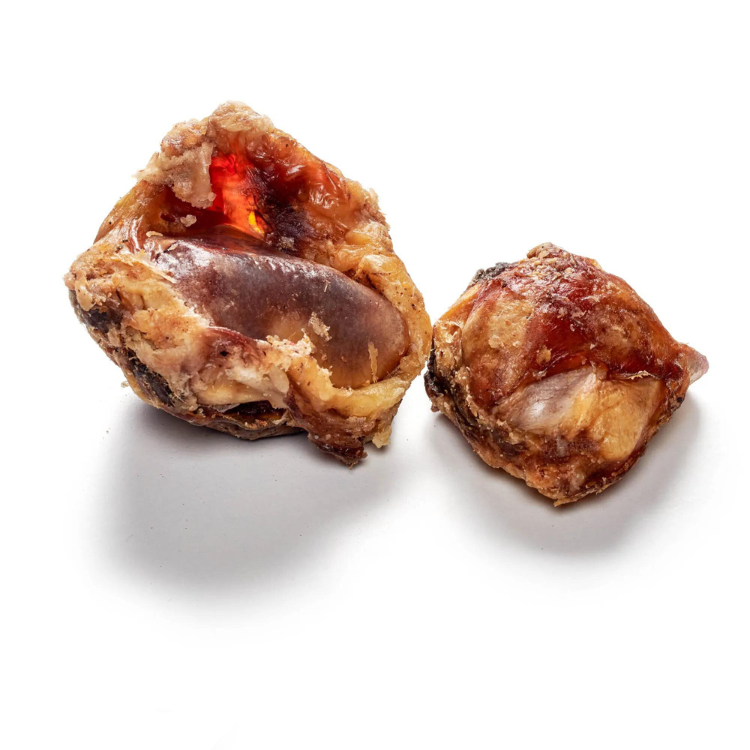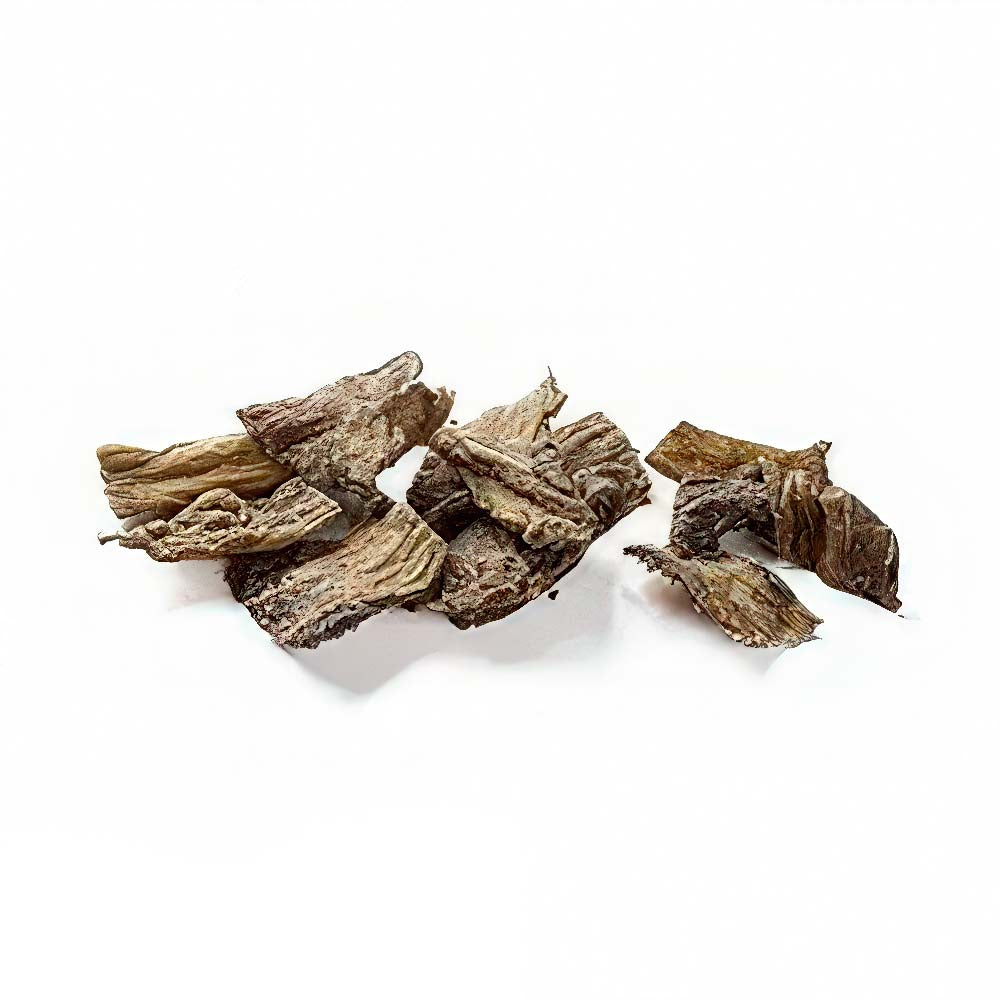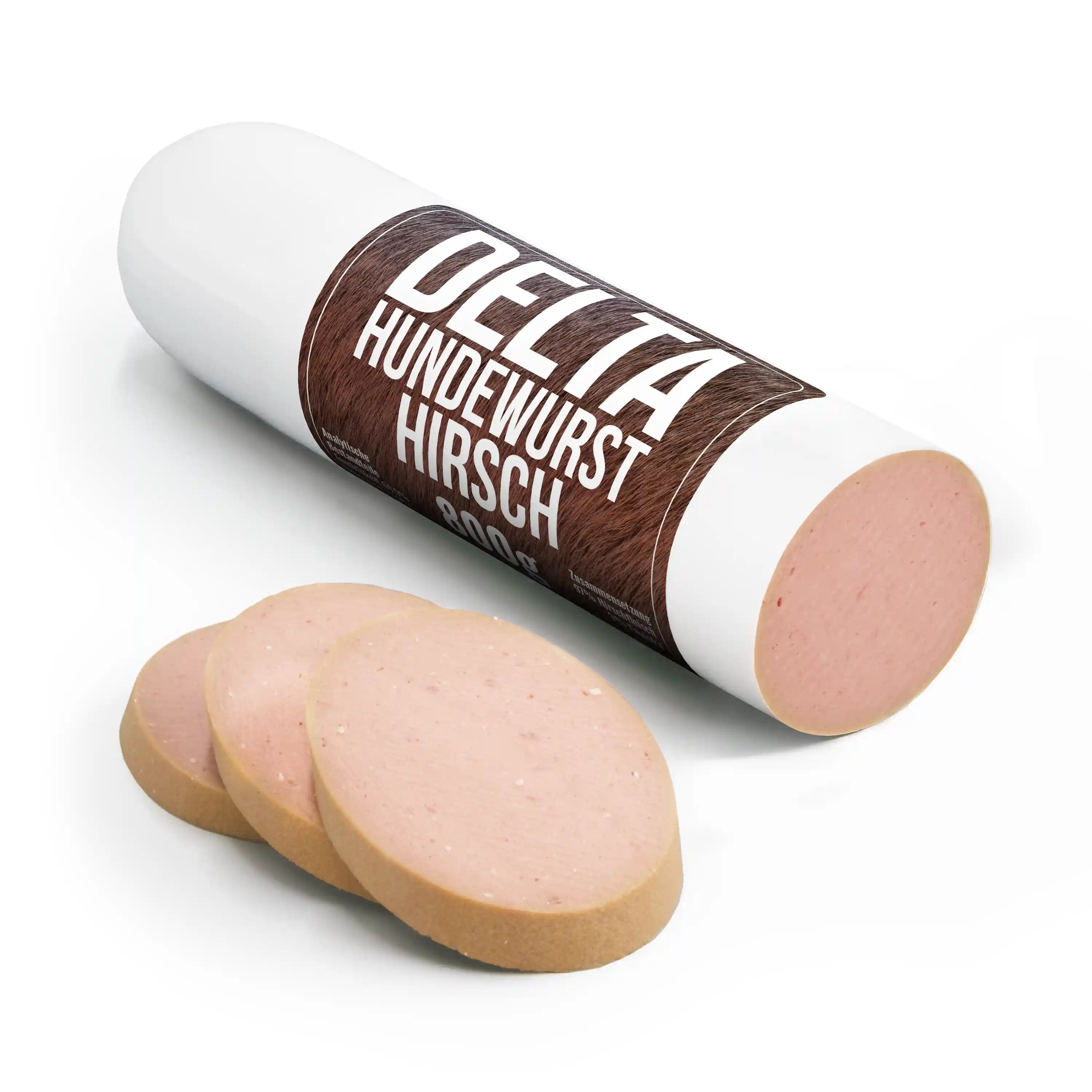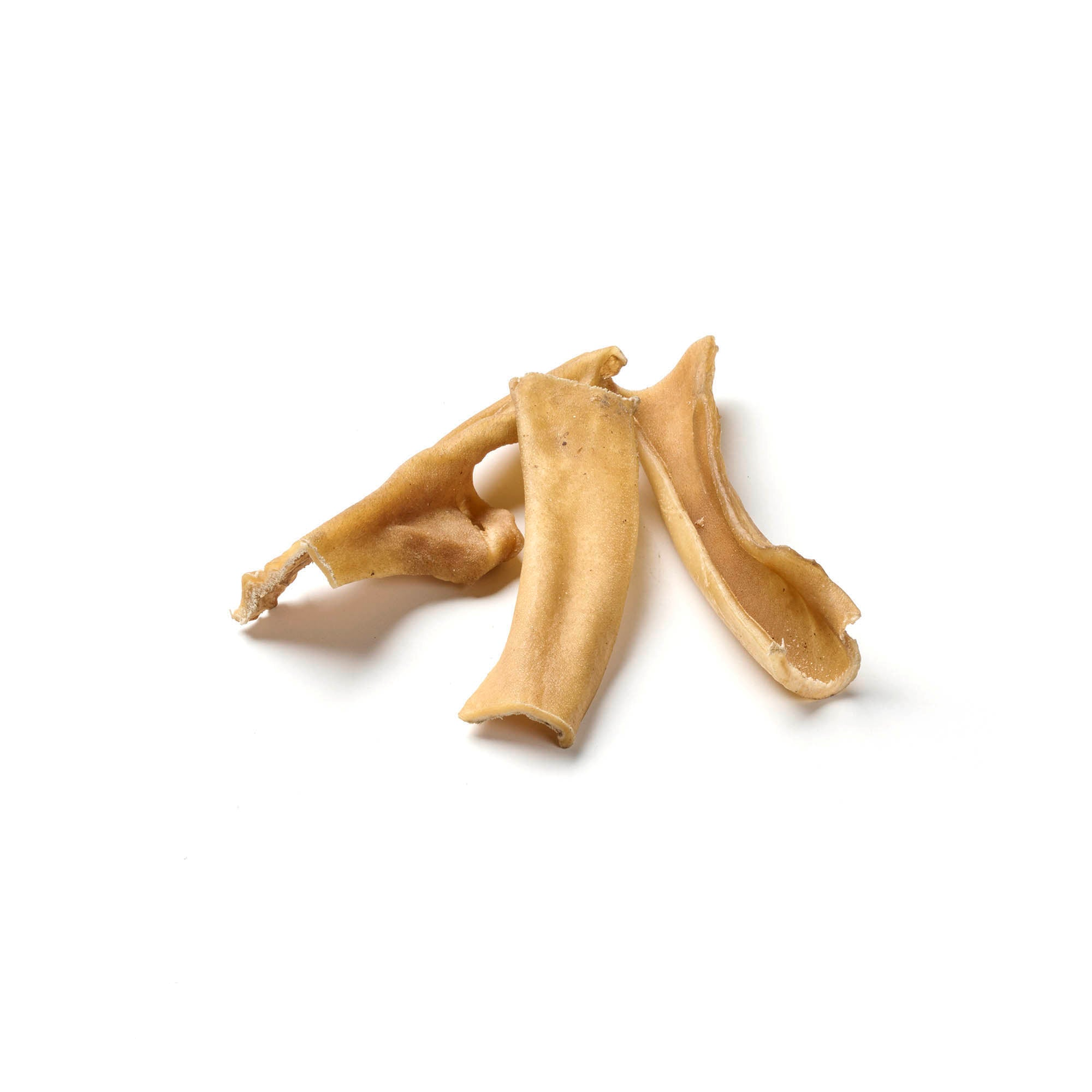
Food Allergies in Dogs
Share
Food allergies in dogs are an increasingly common problem that poses a great challenge for many dog owners. It often starts gradually: the dog scratches itself more often, shows skin irritations or suffers from digestive problems. Suddenly the question arises as to whether a food allergy is behind it. But what exactly does that mean for the four-legged friend? And how can an allergy be recognized and treated?
Contents: Food Allergies in Dogs
- A growing problem among our furry friends
- What are food allergies in dogs?
- Causes of Food Allergies in Dogs
- Symptoms of a Food Allergy in Dogs
- Diagnosis of Food Allergies in Dogs
- Treatment and Management of Food Allergies
- Alternative Nutritional Strategies for Dogs with Allergies
- Tips for Preventing Food Allergies in Dogs
- Chews as allergy-friendly treats
- Conclusion
Delicious dog snacks for pure enjoyment are available from us!
A growing problem among our furry friends
More and more dogs are suffering from allergies. Food allergies in particular have become a big issue. They do not develop overnight, but can creep in over time through constant contact with certain food components. Suddenly the dog reacts to its usual food - something that has been well tolerated for years now seems to be causing problems. There are many reasons for this, and recognizing the symptoms is often not easy. Many owners only notice that their dog is suddenly scratching more or is suffering from recurring gastrointestinal complaints. But that is just the beginning of a long search for the cause. Diagnosing a food allergy can be very time-consuming, but it is important to tackle this challenge - for the well-being of the four-legged friend.
Discover the range of dog snacks in our store!
What are food allergies in dogs?
A food allergy in dogs occurs when the immune system reacts oversensitively to certain proteins in the food. The immune system sees these actually harmless components as an "enemy" and starts a defensive reaction. The allergic reaction can be very diverse and affect the entire body. What many dog owners do not know: Allergies often only develop after repeated contact with a certain allergen. This means that a dog can tolerate a food without any problems for years and suddenly develop an allergy to it.
During this time, the body has developed hypersensitivity and then suddenly reacts violently to the usual food. Food allergies are different from food intolerances. While an intolerance usually causes digestive problems such as diarrhea or vomiting, an allergy can also cause skin problems or severe itching. This often makes it difficult to make the correct diagnosis.
Causes of Food Allergies in Dogs
It is not yet clear why exactly dogs develop a food allergy. However, there are a number of factors that can contribute to the development of the allergy. On the one hand, genetic predisposition plays a role, but on the other hand, environmental factors and the composition of the food can also have an influence. Proteins in the food that the dog regularly eats are often particularly problematic. These proteins are eventually recognized by the immune system as an "enemy" and trigger the allergic reaction. But it is not just proteins that are problematic - grains and additives in the food can also lead to allergic reactions.
Symptoms of a Food Allergy in Dogs
The symptoms of a food allergy in dogs vary widely and can affect the entire body. The most common symptoms include:
Diagnosis of Food Allergies in Dogs
Diagnosing a food allergy in dogs is not easy. Since there are no specific blood tests or skin samples that can clearly detect an allergy, veterinarians often resort to the so-called elimination diet.
The elimination diet as the gold standard
With the exclusion diet, the dog is fed exclusively hypoallergenic food for a period of 8 to 12 weeks. This means that the food may only contain ingredients that the dog has not previously come into contact with. Exotic protein sources such as rabbit or kangaroo are often used. If there are significant improvements during this time, the suspicion of a food allergy can be confirmed. Normal food is then reintroduced step by step in order to identify the specific allergen.
Treatment and Management of Food Allergies
Unfortunately, food allergies in dogs cannot be cured. However, this does not mean that the dog has to suffer permanently. With the right feeding and a few adjustments in everyday life, the allergy can be managed well.
Alternative Nutritional Strategies for Dogs with Allergies
Some dog owners also opt for alternative diets such as BARF (biologically appropriate raw feeding) or home-cooked food. These methods offer the advantage that you can completely determine the ingredients yourself.
BARF for allergic dogs
The BARF method (biologically appropriate raw feeding) has become increasingly popular in recent years, especially among dog owners whose four-legged friends suffer from food allergies. With BARF, the dog is fed mainly raw meat, offal, bones and small amounts of vegetables and fruit. This feeding method offers a great advantage for dogs with allergies, as the ingredients can be individually selected. This means that potential allergens such as certain proteins or grains can be completely avoided.
Exotic meats such as ostrich , kangaroo or rabbit can be a good alternative, especially for allergies to commonly used food ingredients such as beef or chicken. BARF also makes it possible to avoid artificial additives and preservatives, which further reduces the risk of allergies. However, it is important that the BARF diet is well thought out to ensure a balanced supply of nutrients. Working with a nutritionist or veterinarian is recommended to avoid deficiencies and to provide the dog with the best possible care.
High quality dog snacks to pamper your dog, now available!
Tips for Preventing Food Allergies in Dogs
Although not all food allergies can be prevented, there are some measures that can reduce the risk: a varied diet, choosing high-quality food and being careful with snacks and treats.
Hypoallergenic food: A loyal companion
When a dog is diagnosed with a food allergy, finding the right food is often the first and most important step to alleviate symptoms and improve well-being. Hypoallergenic food plays a central role in this. It is specially developed food that does not contain ingredients that often trigger allergic reactions. But hypoallergenic is not always the same - there are different approaches to minimising or eliminating allergens in the food.
Hydrolyzed feed: proteins in the smallest components
One of the most common methods for hypoallergenic food is the use of hydrolyzed proteins. This involves breaking down the protein molecules in the food into such small components that the immune system no longer recognizes them as potential allergens. Hydrolyzing means that the proteins are essentially made "invisible" to the immune system. This method is often used for dogs that are allergic to a variety of protein sources and where it is difficult to find a new, unknown protein source.
Hydrolyzed food is particularly suitable for dogs who have a severe allergy or where it is not clear which protein is causing the reaction. By breaking down the proteins, this food can help prevent allergic attacks while still providing the dog with all the necessary nutrients.
Novel protein sources: exotic alternatives for sensitive dogs
Another popular variation of hypoallergenic food is the use of novel or exotic protein sources. Dogs often develop allergies to proteins they are commonly exposed to, such as beef, chicken or lamb, so switching to less common protein sources, such as rabbit, ostrich, kangaroo or even insects, can bring about a significant improvement.
The advantage of these new protein sources is that the dog's immune system does not "know" them and therefore does not perceive them as a threat. This method is particularly suitable for dogs that have already been found to be allergic to conventional protein sources. In addition, these proteins are often easier to digest, which can also support digestion.
Grain-free options: Carbohydrates can also be problematic
In addition to proteins, certain carbohydrates in food can also trigger allergies. Grains such as wheat, corn or barley are particularly common allergens. Many hypoallergenic foods therefore deliberately avoid grains and instead rely on alternative carbohydrate sources such as sweet potatoes, potatoes or peas. These are not only well tolerated, but also provide the dog with important energy and fiber that supports its digestion.
Grain-free hypoallergenic food is therefore ideal for dogs who are sensitive to carbohydrates in addition to a protein allergy. It offers a comprehensive solution to minimize both protein and carbohydrate allergens while ensuring a balanced diet.
Further advantages of hypoallergenic food
Hypoallergenic food not only has the advantage that it can prevent allergies or alleviate existing symptoms. It is also often of particularly high quality. The ingredients are usually clearly declared and consist of natural, easily digestible components. In addition, hypoallergenic food often contains no artificial additives, colorings or preservatives that could further increase the risk of allergies.
Skin and coat health can also improve significantly by switching to hypoallergenic food. By avoiding allergy-causing substances, the immune system is relieved and many dogs benefit from better skin structure, less itching and a shiny, healthy coat.
Long-term benefits of changing feed
A permanent switch to hypoallergenic chews and hypoallergenic food can not only prevent acute allergic reactions, but also contribute to the dog's general health in the long term. By consistently removing allergens from the diet, the dog's immune system gets a chance to recover and stabilize. This means that the animal is less susceptible to secondary diseases that can be caused by chronic allergies.
For dog owners, feeding hypoallergenic food also means greater security. Once the right food has been found, you can be sure that the dog will no longer show any allergic reactions and will feel better overall.
Making the right choice: Patience pays off
Finding the right hypoallergenic food can take some time. It is important to make the change gradually and in consultation with a veterinarian to ensure that the dog receives all the necessary nutrients and tolerates the food well. Sometimes it can also be helpful to try different hypoallergenic foods until the ideal solution is found.
However, with the right choice of food, a food allergy can be easily managed. Hypoallergenic food is a reliable companion that allows dogs to live a symptom-free life - while still enjoying their food and eating a balanced diet.
Chews as allergy-friendly treats
In addition to hypoallergenic food, chews also play an important role in the diet of dogs, especially for animals that suffer from food allergies. However, many dog owners forget that snacks and treats can also contain allergens. Conventional chews such as beef ears or treats containing grains are often triggers for allergic reactions. It is therefore important to make sure that chews are hypoallergenic and do not contain any problematic ingredients when choosing them.
Hypoallergenic chews are usually made from exotic or less commonly used protein sources that minimize the risk of an allergic reaction. They are free of additives while providing a healthy activity for the dog. Here are some examples of hypoallergenic chews that are well tolerated and tasty. Variety for sensitive dogs are:
These hypoallergenic chews are not only tasty treats, they also support dental care and offer dogs a meaningful activity. At the same time, owners can be sure that their dogs will not show any unwanted allergic reactions. By choosing natural and allergen-free chews, the dog's quality of life can be significantly improved - and all while enjoying and chewing.
Conclusion
Food allergies in dogs are a complex but increasingly common problem that presents challenges for many dog owners. Symptoms can be varied and range from itching to digestive problems, which often makes diagnosis difficult. However, with patience and the right approach, especially through elimination diets and switching to hypoallergenic food, significant improvement can be achieved.
Dog chews available for happy and satisfied four-legged friends!

